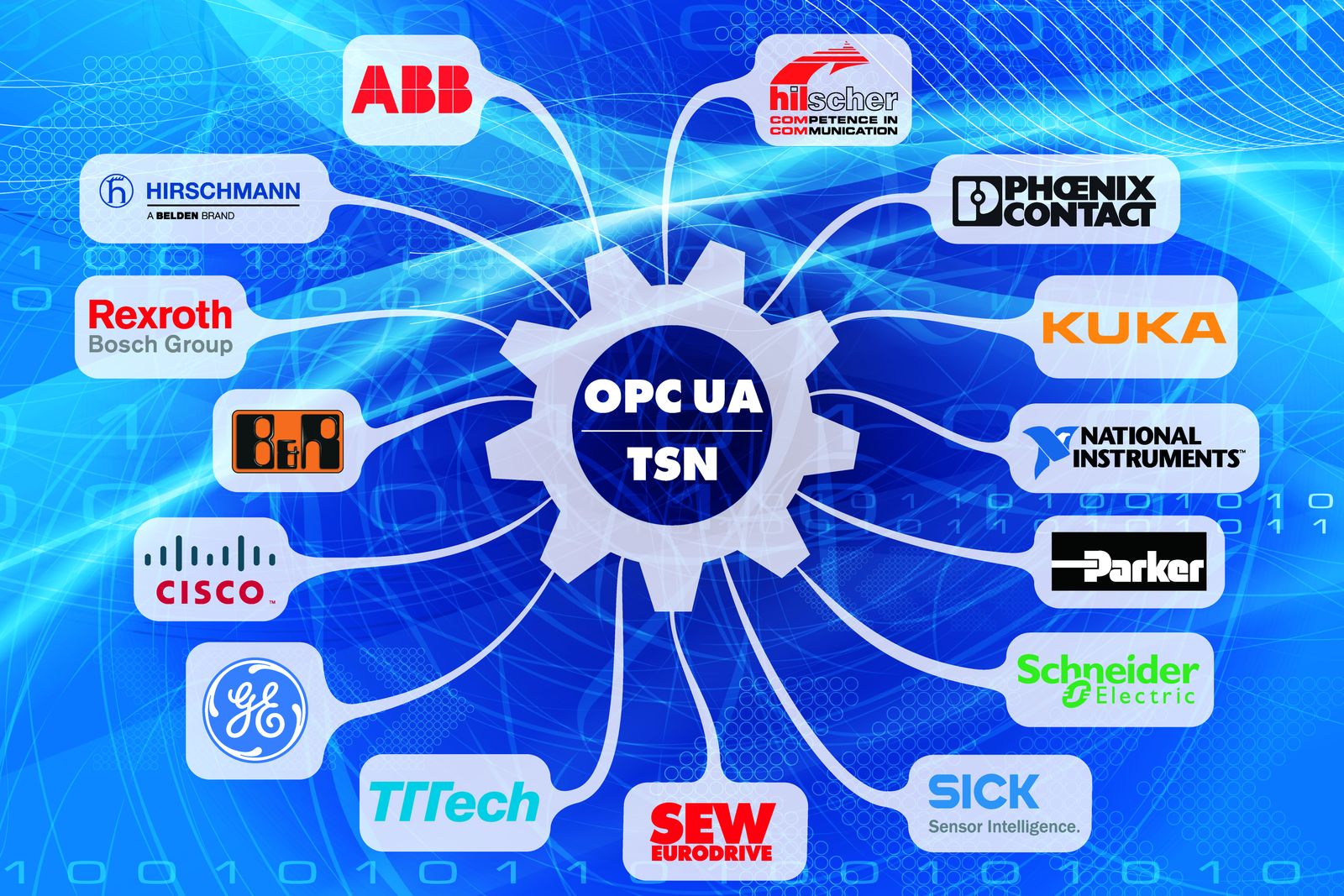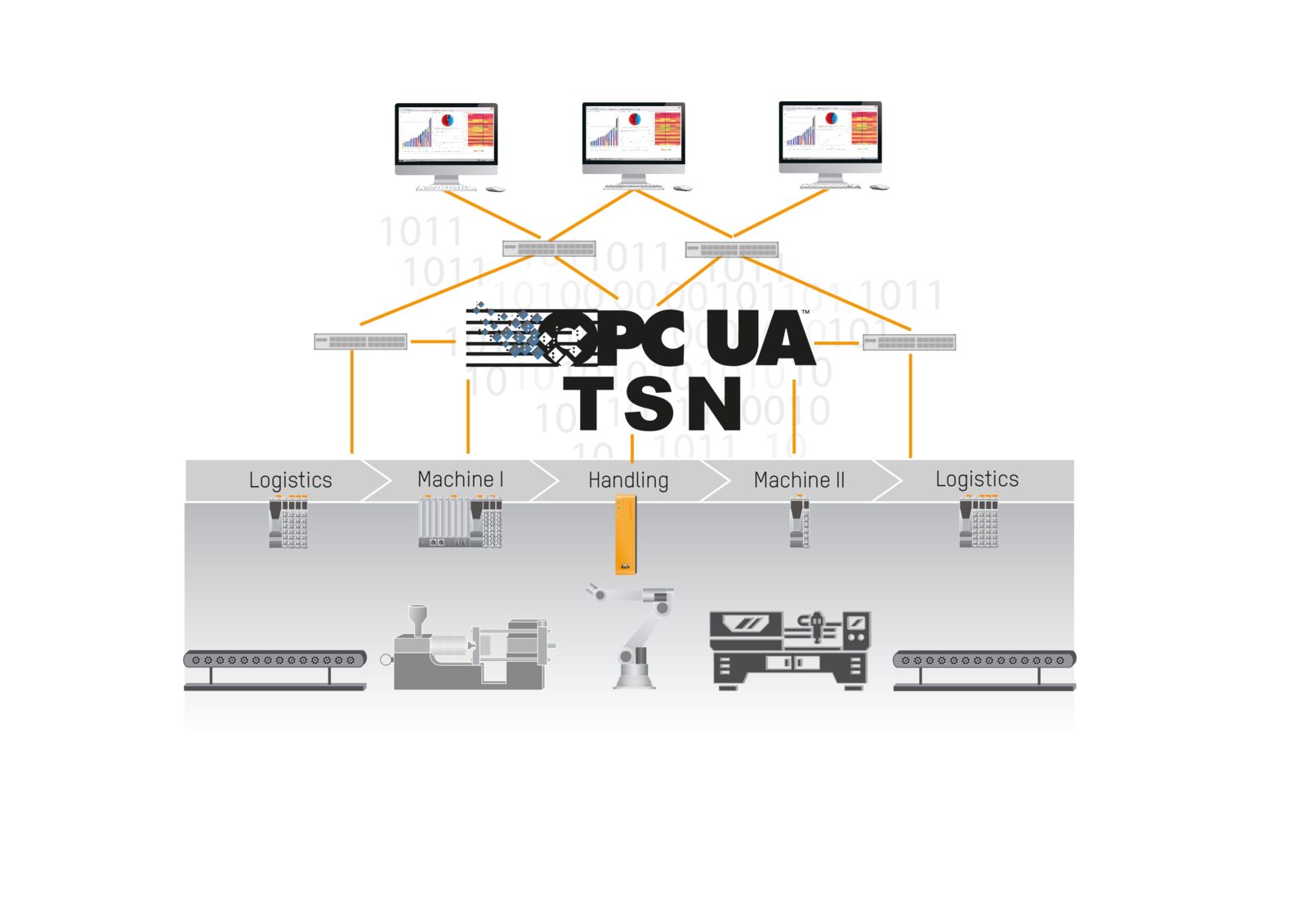Large real-time industrial communication networks pose serious challenges for their operators. As the number of nodes grows, so does the complexity and cost of the engineering involved. These challenges are frequently compounded by the need to integrate a heterogeneous protocol landscape. The extension to the Ethernet standard known as Time-Sensitive Networking (TSN) in combination with OPC UA promises substantial improvement. A number of testbeds are currently underway testing implementation of OPC UA TSN.

For a decade and a half, industrial manufacturing has relied on a variety of proprietary Industrial Ethernet protocols for fast, reliable communication. During this time, operators of plants and machinery have all too often faced the task of integrating a hodgepodge of protocols into a comprehensive network. "It's an extremely time-consuming, cost-intensive undertaking," says Sebastian Sachse, technology manager for open automation at B&R. "It would be so much easier if all the machines simply spoke the same language."
In addition to disparate protocols, producers must also contend with a rapidly growing number of network nodes. Configuring a large real-time network is a laborious process that can quickly push engineering tools to their limits. As we begin to see implementation of the Industrial Internet of Things (IIoT), networks with hundreds of fieldbus-level nodes will become increasingly common.
The Industrial Internet Consortium
In March of 2014, five companies – AT&T, Cisco, General Electric, Intel and IBM – came together to form the Industrial Internet Consortium (IIC). Among the non-profit's objectives is the definition of reference architectures and frameworks that will make interoperability possible.
One of the main topics addressed by the IIC is the Industrial Internet of Things. Other areas include healthcare, transportation and finance. Rather than develop develop standards itself, the IIC cooperates with organizations such as the IEEE, IETF, AVNU Alliance and the OPC Foundation.

The TSN testbed
"In terms of the Industrial IoT, there is one aspect of the IIC that is particularly interesting: the TSN testbed," notes Sachse. "What we need is a technology that makes machine and plant networks more modular, flexible and easier to work with – and the market is largely unanimous that OPC UA TSN is that technology." While OPC UA development is driven by the OPC Foundation, the IIC is heavily involved in TSN implementation.
B&R recognized the potential of TSN early on, leading them to join in the IIC's efforts. "The consortium was the first organization to begin testing TSN under real-world conditions," explains Sachse. Since then, the automation specialist has been helping advance the technology through its participation in the TSN testbed, evaluating the interoperability of its OPC UA TSN prototypes with those of other members. As of May 2017, that includes: B&R, Bosch Rexroth, Schneider Electric, National Instruments, Kuka, Sick, Cisco, Intel, Belden/Hirschmann, Hilscher, Renesas Electronics, Analog Devices, TTTech and Xilinx. Other participants include: Calnex, Ixia, ISW Stuttgart University and Phoenix Contact.
Successive testing of core TSN capabilities
TSN is an extension of the Ethernet standard and brings a number of improvements that will give Ethernet real-time capability. The testbed members successively tested three core capabilities in particular: time synchronization, traffic scheduling (precisely timed sending of data packets and frames) and automated system configuration with a central network configurator (CNC).
A fundamental requirement for the use of TSN in real-time industrial communication is timing synchronization in accordance with 802.1AS-Rev. This TSN standard includes definitions of the Precision Time Protocol (PTP), which synchronizes the clocks of all devices in the network. In the test setups, PTP exceeded expectations by achieving a precision of under 100 nanoseconds.
The second core TSN capability evaluated in the testbed's plugfests was scheduled transmission of data packets and frames as outlined in IEEE 802.1 Qbv. A Time-Aware Scheduler ensures that time-critical data is always prioritized so that it is not blocked by general network traffic.

Dynamic configuration
The network used in initial plugfests had a static configuration. Current tests are now examining dynamic configuration. When a new device is added to the network, it registers itself with the central network configurator, which establishes a connection with other devices and reconfigures the network accordingly. The goal of these tests is to eventually implement IEEE 802.1 Qcc throughout the entire system.
The individual elements of TSN work together perfectly – not just in theory but also in real-world testing – and will enable real-time communication using standard Ethernet components. The TSN testbed currently consists of two setups – one is located at National Instruments in Austin, Texas and the other at Bosch Rexroth in Erbach, Germany. In April of 2017, the German association Labs Network Industrie 4.0 (LNI 4.0) announced plans to establish its own TSN testbed in cooperation with the Mittelstand 4.0 competency center in Augsburg. Mittelstand 4.0 is a German initiative created to support the digital transformation of Germany's small and medium-sized enterprises.
The team envisions a mobile demo that can be transported by truck. Though their approaches differ, the IIC and LNI 4.0 share a common goal: 100% interoperability. Collaboration between the two initiatives is already in planning. B&R will also be participating in the LNI testbed.
Plug-and-produce
"The IIC testbed clearly demonstrates how innovation cycles are growing shorter," says Sachse. Preparations for the testbed began only two years ago, and the first core capabilities have already reached technological maturity. "For a completely new technology that is astoundingly fast."
The market is undergoing a fundamental shift. Traditionally, control system suppliers have sought to differentiate themselves by means of their communication technology. "Those days are gone," says Sachse. OPC UA TSN will serve as a uniform standard for seamless communication above the controller level.
With the newly gained interoperability, commissioning will involve little more than simply plugging in the network cable. "Welcome to the age of plug-and-produce," smiles Sachse.
 | Sebastian Sachse Technology Manager - Open Automation, B&R "In terms of the Industrial IoT, there is one aspect of the IIC that is particularly interesting: the TSN testbed. What we need is a technology that makes machine and plant networks more modular, flexible and easier to work with – and the market is largely unanimous that OPC UA TSN is that technology." |